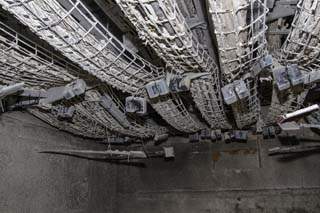Fire Resistance Standards and my duty to design with appropriate skill and care
“What if I became aware that parts of the very building regulations I rely on are inadequate?”
Today the UK Building Regulations, Approved Document B adopts the standard time temperature protocol of ISO834-1 / EN1363-1 in BS476 pts 20 to 24 for fire resistance testing of all building elements such as fire doors, fire stopping systems for penetrations, structural elements, fire walls and partitions, in fact every material, component and product used in a building that is required to have a fire resistance rating.
What is often overlooked is that this time temperature protocol for fire resistance testing (ISO834-1 / EN1363-1 aka the standard time temperature curve), was developed almost 100 years ago when buildings and contents were commonly made of wood and fabric and when plastic or synthetic materials did not exist (1). Further, buildings of this age were mostly not very tall or very large. Today our built environment consists of both large and small buildings but critically is far more complex with super high rise and mega-interconnected transportation, retail, commercial structures with significant below ground environments. In these buildings we have a much larger range of evacuation times and where these egress times are very long, designers and engineers need to look for alternative more innovative solutions for evacuation or protection of occupants such as reducing fire loads, lift evacuation or protect in place refuges.
Recent research (2) has identified that in most modern buildings the use of light weight and polymeric building materials, plastic contents, synthetic foams and fabrics with high calorific values can significantly increase fire loads resulting in time temperature fire profiles significantly different and in cases well above the original parameters of the existing, early 1900’s test protocol as adopted in BS476 (ISO834-1 / EN 1363-1) and as mandated by the Building Regulations for fire resistant building elements.
Underground environments can also exhibit very different fire profiles to those in above ground cellulosic environments (3) especially in confined underground public areas like road and rail tunnels, underground shopping centers, car parks where a high fire load is present. Fire temperatures in these areas can exhibit a very fast rise time and reach temperatures well above those in standard model above ground buildings. British Standard BS8519:2010 and BS EN12485 clearly recognise underground public areas such as car parks, loading bays and large basement storage as “Areas of Special Risk” with potential for fire temperatures to 1,200°C. In these environments more stringent requirements for fire resistance maybe needed.
Worse still…
Almost all Life Safety & Fire Fighting systems depend on the reliable function of electric cables during emergency. If these essential cables fail during a fire event, the critical equipment they enable also fails. This could mean that firemen’s lifts, fire sprinklers, hydrant pumps, smoke & heat extraction and pressurization fans, emergency communication, alarms and lighting systems stop working during evacuation putting occupants, emergency response workers and property at risk. It is therefore concerning that the only exception in the Building Regulations for fire resistance testing to BS476 pts 20-24 is for the very electric cables required to power all emergency life support and firefighting systems. This contradiction allows these essential cables to be tested to alternative flame tests which have little or no relevance to real building fires and at lower final temperatures than required for all other fire resistant elements of the building.
This anomaly has occurred in the Building Regulations because the BSI cable testing standards adopted by the regulations for Protected Circuits allow this strange exception. In looking to world’s best practice, it is interesting to note that other developed countries including America, Canada, Australia, New Zealand Germany and Belgium have for years, required testing of these essential cables to the same fire time temperature protocol as every other building element which is the same as used in BS476 pts 20-24 i.e. ISO 834-1 / EN 1363-1.
Given most buildings rely on functional and reliable life safety and firefighting systems to protect life and property it would seem logical that these protected circuits should be tested to perform to at least the same standard as everything else because logically they will be in the same fire. It might be better if they were subject to even higher standards in order to ensure that the critical life safety and firefighting systems remain functional during evacuation (as is required in the USA and Canada).
In light of recent major fire events in the UK and around the world, having British Standards years behind global best practice for electrical wiring systems enabling life safety and firefighting systems is unacceptable.
Fortunately there is expertise and wiring systems both approved and available in the UK market to assist electrical design engineers find appropriate solutions for all major projects where egress times are long or anticipated fire profiles could be in excess of the minimum regulatory requirements of today. The MICC Ltd company based in Washington, Tyne & Wear is one such manufacturer who produces essential wiring systems for Protected Circuits for the most demanding applications in buildings, underground built environments, nuclear power and industrial Petro Chemical applications.
Whilst it is common to rely on code and professional consultants are generally indemnified from designing with a ‘fit for purpose’ mandate, it remains necessary to exercise ‘reasonable skill and care’. Even if the builder and/or project owners inherit more liability under the Sale of Goods Act (5) due to implied terms that the goods and products supplied will be of satisfactory quality where a purchaser makes known a particular purpose (4), there remains both an ethical and prudent incentive for the contracted professional consultant to factor in the design any known limitations in regulation or standards.
BRAC (Building Regulation Advisory Committee) is aware of the Protect Circuit testing anomaly and hopefully will address this in future revisions.
- A Short History Of The “Standard” (Cellulosic) and Hydrocarbon Time/Temperature Curves (2000) Paul Mather Technical Engineering Manager Fire & Insulation Products, International Coatings Limited.
- Fire Safety of Buildings Based on Realistic Fire Time-Temperature Curves (2013). Ariyanayagam, Anthony Deloge & Mahendran, Mahen Queensland University of Technology.
- Recent achievements regarding measuring of time-heat and time –temperature development in tunnels (2004). Haukur Ingason and Anders Lönnermark SP Swedish National Testing and Research Institute.
- Fenwick Elliott Annual Review 2014/2015 Understanding your design duty – “reasonable skill and care” vs. “fitness for purpose” – mutually incompatible or comfortably coexistent?
- Section 13, Supply of Goods and Services Act 1982
About the author:
Richard Hosier is the Regional Manager in Asia/Pacific for the world’s largest manufacturer of mineral cables the MICC Group: www.miccltd.com Mr. Hosier has lectured at institutions and universities around the world publishing many technical papers on advanced fire safe cable design. He was the winner of the Institute of Fire Protection Officers UK technical trophy award in 2014 for his research into fire performance wiring systems and previously served on 3 Australian and New Zealand technical standards committees for fire safe wiring systems and cables.
Other publications by this author:
- Fire Resistant Cables – April 2017
- Wiring Systems for Hospitals – June 2015
- Wiring Systems for Nuclear Power Stations – July 2014
- Wiring Systems for Road and Rail tunnels – July 2014
- Electric Cables Fire Performance – May 2014











